The Wörner B13 has a notable building quality. It’s not cheap machine at all. After the disassembly, al mechanical elements were cleaned of debris and this olde grease that forms a kind of hard lack with years. Surely, the machine was serviced before: there are traces of poor repairing and assembly. I’m not sure, however, that it was also cleaned and relubed. Grease looks very old in some bearings.
What follows are some detailed pictures of the distinct assemblies after cleaning the parts. Some of them show a remarkable quality.
This is the driving shaft that conduces the spindle and supports the driven pulley. A couple of deep grove ball bearings (6005 and 6007) support the shaft, which is splined in its interior. The housing fits into the quill bore.
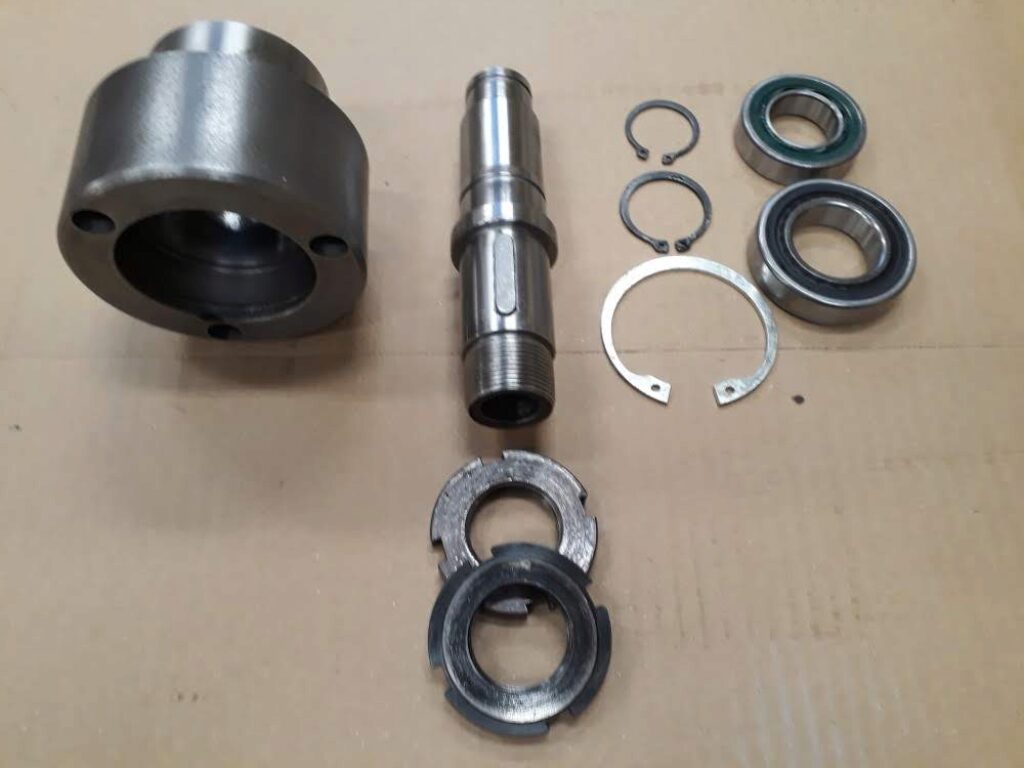
This is the spindle assembly. The spindle ends in a Morse 2 tapper. In this end, it is mounted on three bearings. Two deep grove ball bearings and an axial ball bearing. Bearings are of series 6005 but actual precision of them is unknown to me. It seems they are not current series bearings. The opposite end is held by a 6004 bearing. All the pack is preloaded by two cup washers locked by a retaining ring DIN 471. The runout of the spindle before servicing was around to 0.005mm.
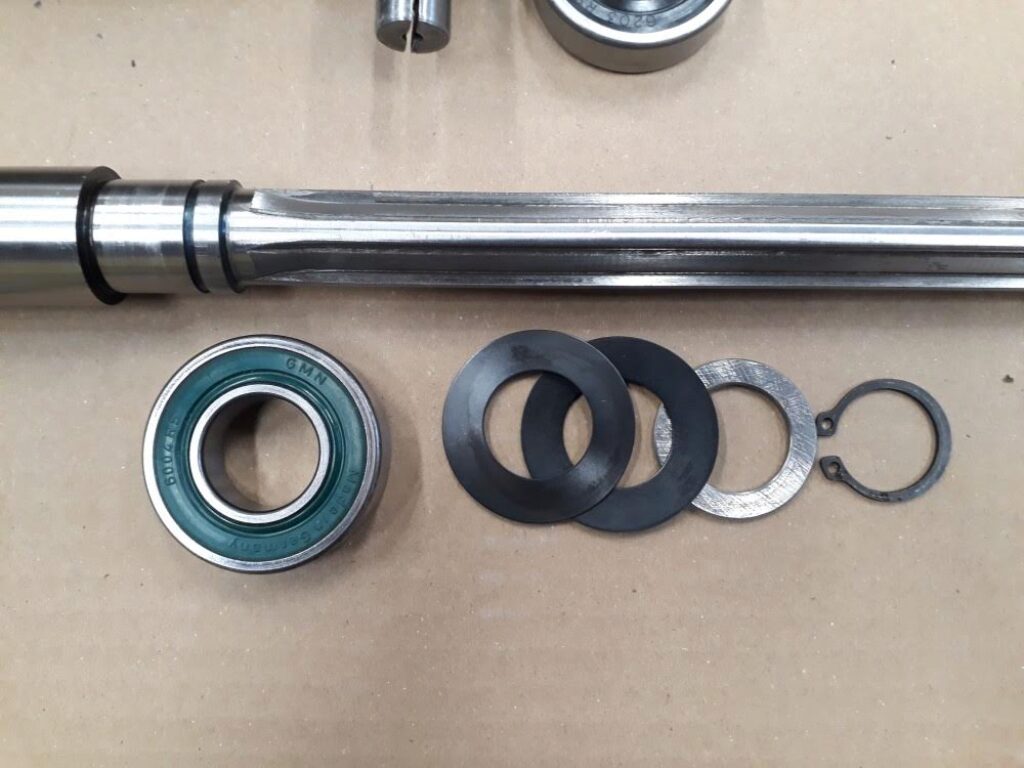
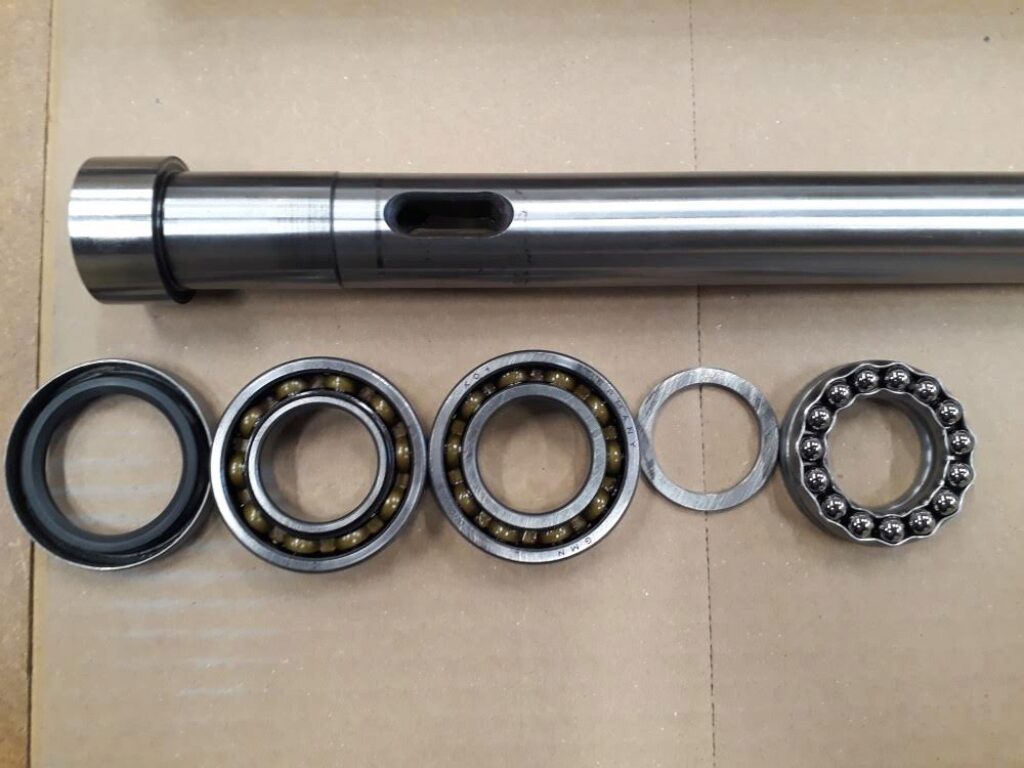
This is a picture of the quill with the spindle and the descent gear. Note the rack dimensions and the fact that it is of helical kind. Pinion shaft is mounted on bearings.
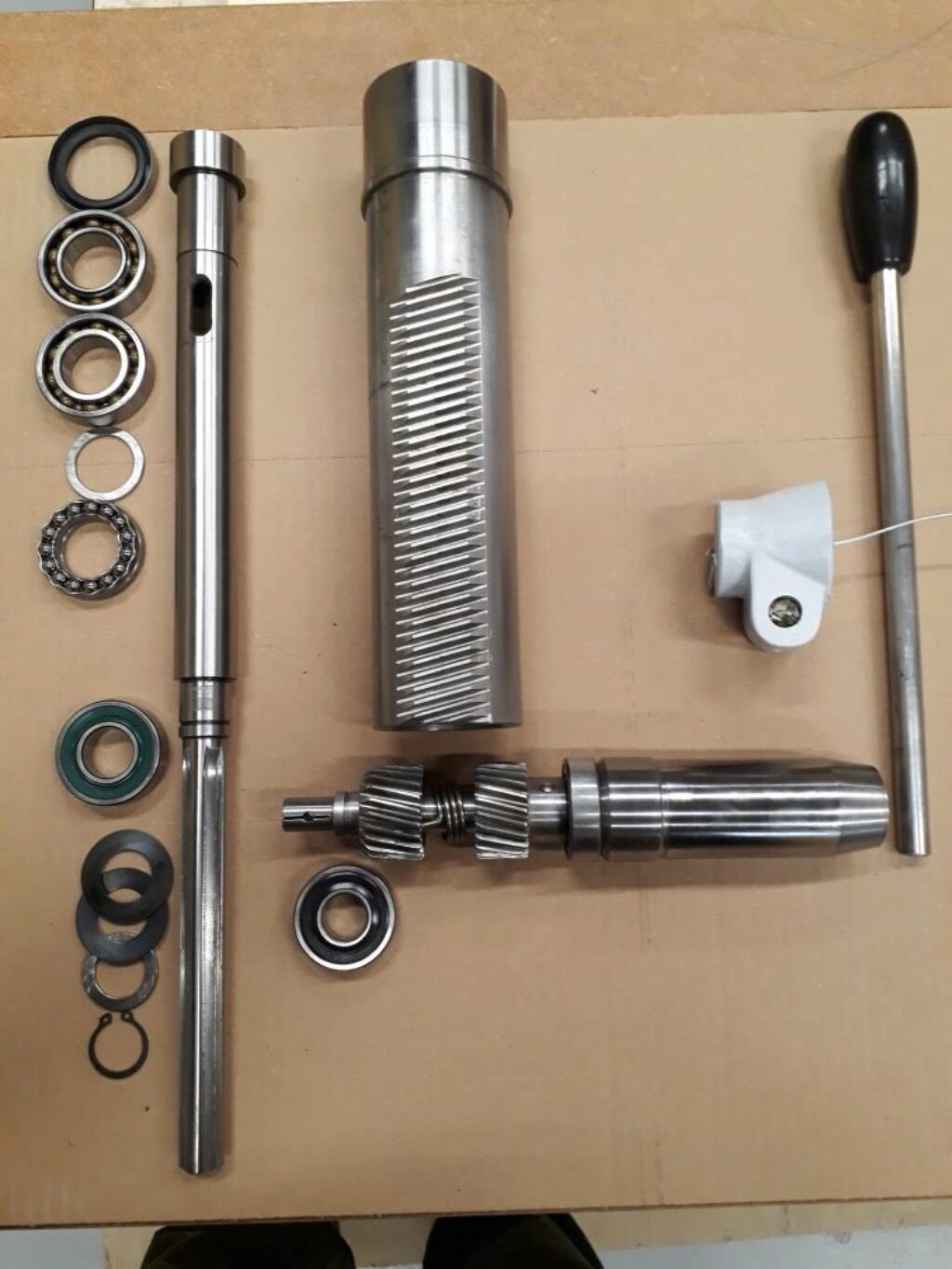
The pinion shaft shows a rather unusual detail: pinion is of a zero play kind. There is a parted pinion with a spring in between that allows for a non play quill descent mechanism. Note the big smooth flange in the left pinion part that facilitates the assembly to the rack.
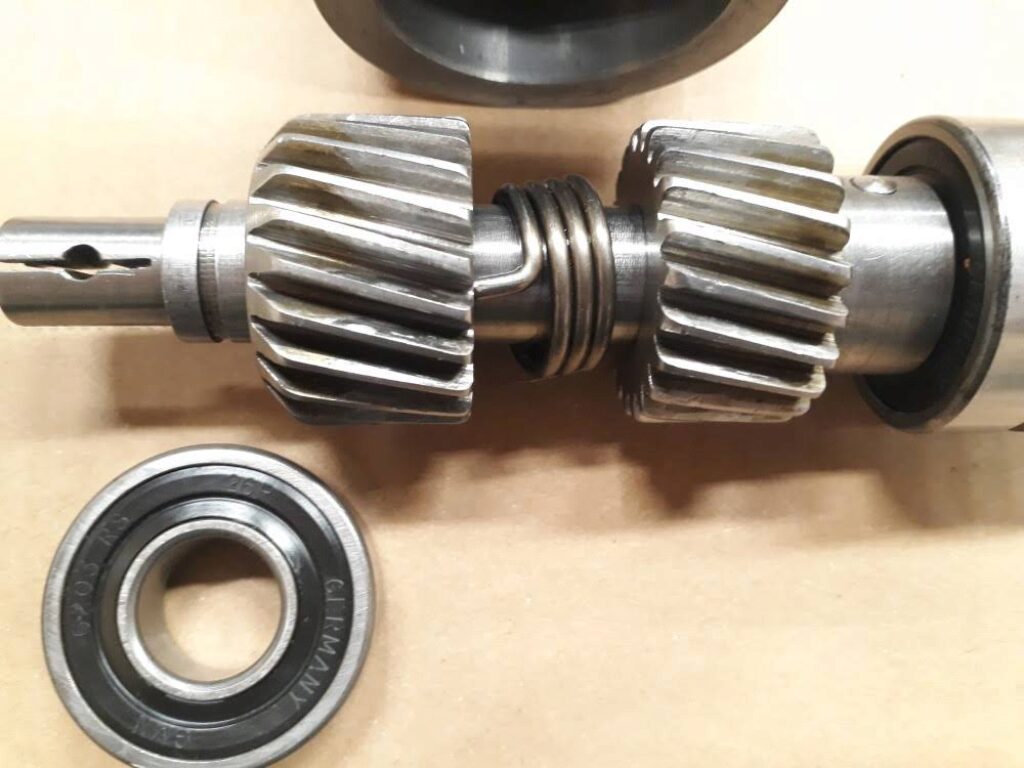
This is the belt tensioner mechanism. Note that it runs with a rack and pinion, which is not an cheap at all to build.
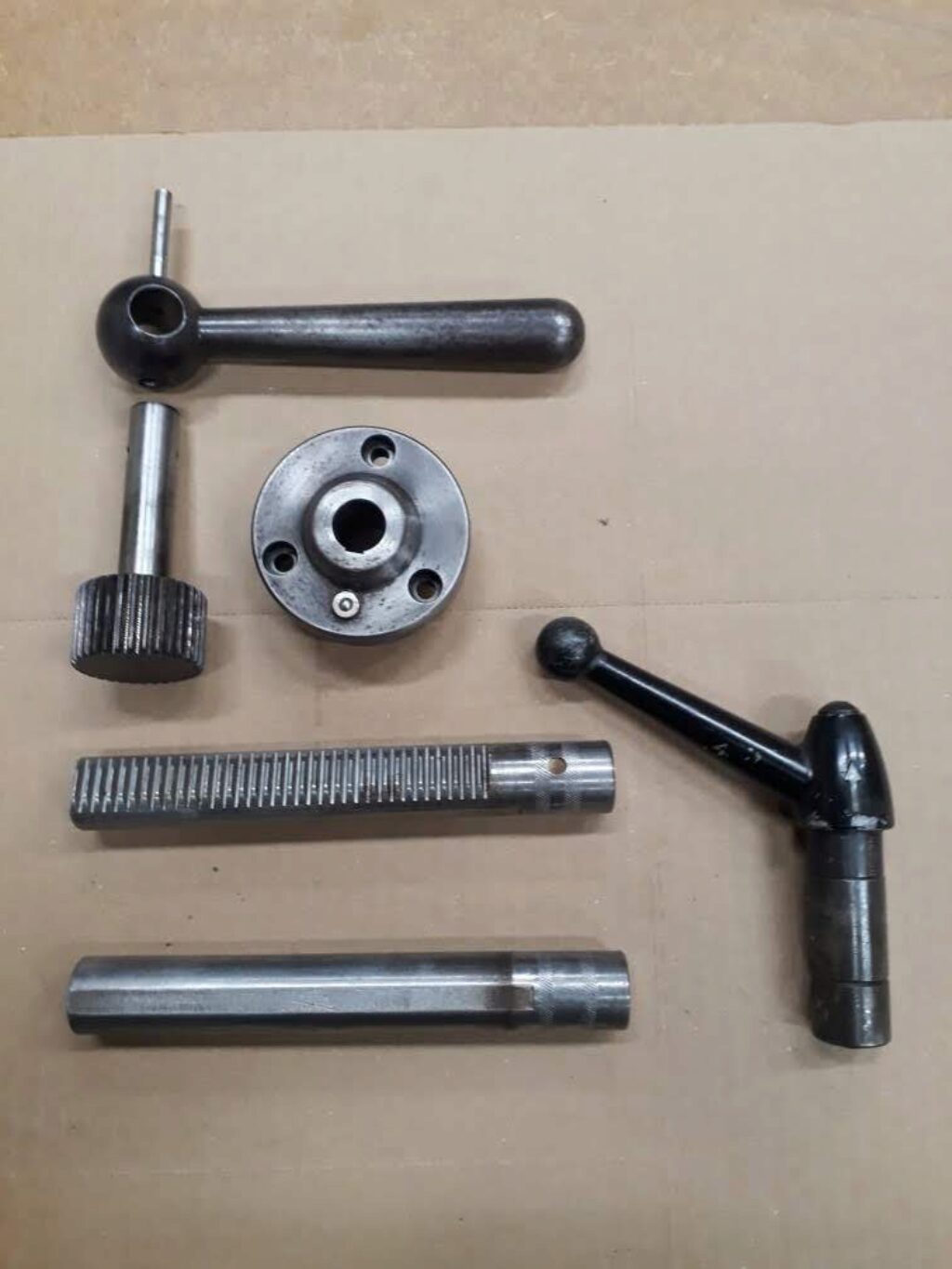
The drilling depht indicator and stop.

This is the assembly that is used to raise and lower the machine head. Again it is built around a rack and pinion basis. The rack end has tooth in the back that sustains the drilling head column and lets the operator to raise it. Note that the pinion is turned by a worm. All this assembly is mounted on the column suport attached to the drilling table.

